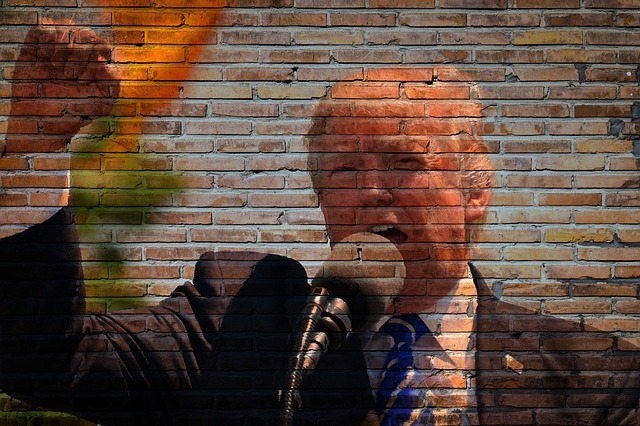
Updated Sep, 2023
The Trump Movement Gathering Momentum
The Trump Movement has been a remarkable force in American politics, capturing the attention and support of a significant portion of the population. This article explores the origins of this movement, the factors fueling its momentum, and its impact on the political landscape.
Introduction
The Trump Movement is a political phenomenon that has been gaining momentum in recent years. It represents a substantial segment of the American population who align themselves with the ideology and leadership of former President Donald Trump. The movement’s momentum is a testament to its enduring significance in American politics.
The Origins of the Trump Movement
Birth of the Movement
The Trump Movement’s origins can be pinpointed to the 2016 Presidential campaign, a seismic event in American politics when Donald Trump, an outsider and business tycoon, stunned conventional wisdom by clinching the election. His campaign was fueled by the rallying cry, “Make America Great Again,” a slogan that struck a chord with a sizable segment of voters disillusioned with the traditional political establishment. This unexpected triumph marked the inception of a political movement that would significantly impact the nation’s landscape.
In 2016, Donald Trump’s victory was not just a win for a single individual; it was the birth of a transformative political force. This movement emerged from a perfect storm of discontent, driven by a blend of economic unease, growing distrust in traditional politicians, and a longing for change. Trump positioned himself as a political maverick, unburdened by the constraints of party politics and unafraid to challenge established norms.
The core of this movement was built on several pillars. First, Trump’s appeal to the working class, promising to revive ailing industries and protect American jobs, resonated with those who felt economically marginalized. Second, his disdain for political correctness struck a chord with those who perceived it as stifling free speech and honest discourse. Finally, his “America First” approach to foreign policy was seen by supporters as a return to a strong and assertive national stance.
The movement was not without its controversies and divisions. It prompted fierce debates on immigration, trade, and the role of the federal government. However, what was undeniable was its capacity to galvanize millions of Americans into a passionate, fervent base.
In the years that followed, the Trump Movement would continue to evolve and influence the nation’s political landscape, shaping the policies and conversations of subsequent administrations and leaving a lasting imprint on American politics.
Key Ideological Elements
The ideological bedrock of the Trump Movement is a tapestry woven from a strong emphasis on conservative values, unyielding economic populism, and a forthright rejection of political correctness. At its heart, this movement draws its strength from those who champion limited government, traditional social values, and a resolute stance on immigration. These key elements not only shape the movement’s core ideology but also define its distinct identity.
Conservative values are the underpinning of this movement, with an unwavering commitment to principles such as individual liberty, personal responsibility, and a free-market economy. Supporters look to these values as a roadmap for a reinvigorated America, one that adheres to the ideals enshrined in the Constitution while striving for economic growth and prosperity. This allegiance to conservatism extends beyond rhetoric; it has translated into policies aimed at deregulation, tax cuts, and a more business-friendly environment.
Economic populism, a driving force of the Trump Movement, addresses the concerns of those who have felt left behind in the evolving economic landscape. This aspect of the movement’s ideology prioritizes the interests of the working class, advocating for job creation, trade policies that safeguard American industries, and a commitment to revitalizing the manufacturing sector. It’s an approach that seeks to bridge the economic divides that have emerged in recent decades.
Rejecting political correctness is a hallmark of the Trump Movement. It manifests as a refusal to conform to the norms of sanitized speech and thought. Supporters view this rejection as an embrace of candid and unfiltered dialogue, a direct challenge to the perceived constraints on free expression and debate. This commitment to speaking one’s mind, however controversial, is seen as a means to ensure that no idea or viewpoint is suppressed.
On the immigration front, the movement’s ideology includes a tough stance that emphasizes border security and immigration controls. It seeks to safeguard national interests and uphold the rule of law. This unwavering stance has spurred debates about the nation’s identity and the values that underpin immigration policies.
These key ideological elements, deeply embedded in the Trump Movement, continue to shape its discourse and influence policy decisions, making it a prominent and enduring force in American politics.
Factors Fueling Momentum
Populist Appeal
Central to the essence of the Trump Movement is its profound connection to populism. This political force resonates with the everyday Americans who have long sensed their concerns falling on deaf ears within the corridors of political power. The movement’s appeal goes beyond just a political affiliation; it represents a rallying cry for those who have felt marginalized by the political elite and yearned for a fresh approach to governance.
At the heart of this populist appeal is Donald Trump’s unvarnished and straightforward communication style. He defied the tradition of polished political discourse, opting for direct, no-nonsense language that anyone could understand. This authenticity struck a powerful chord with a broad cross-section of the population who had grown weary of the carefully crafted statements and double-speak often associated with career politicians. Trump’s willingness to challenge the status quo was a breath of fresh air, and it engendered a sense of hope that a different, more accessible form of leadership was possible.
The movement’s populism was characterized by a commitment to addressing the real concerns of everyday Americans. It placed a spotlight on issues that had long been overlooked, such as the decline of traditional industries and the economic struggles of the working class. By championing policies like tax cuts and deregulation, the movement aimed to stimulate job growth and economic prosperity, providing tangible benefits to those who had felt neglected by previous administrations.
Another key aspect of the movement’s populism was its dedication to upending the established political order. It wasn’t just about one individual; it was about challenging the entrenched interests that many believed had failed the nation. Supporters saw in Trump a champion who was willing to take on the political establishment and, in their eyes, disrupt the cozy relationships that had perpetuated the status quo.
In essence, the populist appeal of the Trump Movement hinged on giving a voice to the voiceless and offering a pathway for change that transcended traditional partisan lines. It embodied a desire for a government that listened to the people and addressed their genuine concerns, a sentiment that continues to influence American politics to this day.
Social Media’s Role
In the evolution of the Trump Movement, the influence of social media has been nothing short of revolutionary. The advent of platforms like Twitter and Facebook ushered in a new era of political communication, fundamentally altering the way political leaders and their supporters engage with each other and the wider public. This digital landscape provided a dynamic platform for Donald Trump, allowing him to forge an unfiltered connection with his supporters, break free from traditional media constraints, and command the narrative in real-time.
The impact of social media was most evident in the direct line of communication it established between Trump and his followers. This direct channel circumvented the intermediaries of traditional journalism, enabling Trump to convey his message and bypass potential media bias. His tweets, in particular, became an integral part of his communication strategy, making headlines and driving discussions on a daily basis. The ability to tweet unfiltered and in real-time provided an unprecedented level of authenticity and transparency that many found refreshing.
Furthermore, social media was instrumental in galvanizing the Trump Movement’s base. It offered a digital meeting place for like-minded individuals, fostering a sense of community and shared purpose. Trump’s supporters could connect, organize, and mobilize on these platforms, which were instrumental in the success of rallies, fundraising efforts, and get-out-the-vote campaigns.
The impact of social media extended beyond the United States; it allowed Trump to reach a global audience, shaping international perceptions of American politics. His tweets on foreign policy, trade, and global events often had far-reaching consequences, leading to diplomatic discussions and public reactions worldwide.
However, the role of social media in the Trump Movement was not without controversy. It amplified political polarization and misinformation, raising concerns about the spread of fake news and the erosion of civil discourse. The platform’s ability to rapidly disseminate unverified information had both positive and negative implications, contributing to the divisiveness of the political landscape.
In summary, the rise of social media played a pivotal role in the Trump Movement, providing a direct and unfiltered channel of communication, fostering community among supporters, and influencing not only national but also global conversations. It was a powerful tool that shaped the movement’s trajectory and left a lasting mark on modern political discourse.
Key Political Events
Throughout its existence, the Trump Movement has weathered a series of pivotal political events that have both tested its resilience and fueled its momentum. Notably, events such as the impeachment trials and the 2020 election stand out as turning points that have only served to bolster the movement. They galvanized Trump’s supporters, who viewed him as a victim of a perceived biased political system and amplified their commitment to the cause.
The first major political event that tested the movement’s mettle was the impeachment trials. Trump faced impeachment proceedings not once, but twice during his presidency, with the first occurring in 2019 and the second in 2021. These trials accused him of various offenses, including abuse of power and incitement of insurrection. The response from Trump’s supporters was fervent, with many perceiving the trials as politically motivated attacks aimed at undermining a leader they saw as a disruptor of the established order.
The 2020 election, however, loomed as the most consequential event. Trump’s re-election campaign was a focal point of his presidency, and when the election results were announced, they ignited a firestorm of controversy. Trump and his supporters contested the results, citing allegations of election irregularities. His refusal to concede and the legal battles that ensued became defining moments in the movement’s history. Many of his followers were convinced that their voices were being silenced, leading to protests and fervent demonstrations.
The events surrounding the 2020 election, including the storming of the U.S. Capitol on January 6, 2021, highlighted the movement’s ability to mobilize and rally its supporters. They saw themselves as champions of electoral integrity, fighting against perceived injustices in the political system.
In the face of these challenges, the Trump Movement exhibited remarkable resilience. It continued to be a dominant force in American politics, influencing not only the discourse within the Republican Party but also the wider political landscape. The events that tested the movement’s strength also served to solidify the unwavering dedication of its supporters, making it a formidable and enduring presence on the national stage.
The Impact of the Trump Movement
Shaping Modern American Politics
The Trump Movement has carved a profound and enduring impact on the modern American political landscape. Its influence has extended far beyond individual elections, reshaping the core tenets of the Republican Party’s platform and fundamentally altering the dynamics within the party. This transformation has triggered a notable schism, where traditional Republicans find themselves at odds with the burgeoning Trump wing, leading to a redefinition of conservative politics.
One of the most striking consequences of the Trump Movement is the ideological shift within the Republican Party. It has steered the party towards a more populist direction, emphasizing elements such as economic protectionism, tough immigration policies, and an ‘America First’ foreign policy approach. Traditional conservative stances, such as fiscal restraint and free-market principles, have, in some cases, taken a back seat to this populist fervor.
This ideological shift has had a ripple effect on various policy areas. The Trump Movement’s emphasis on tax cuts, deregulation, and pro-business policies has found traction within the party, influencing economic policy decisions and spurring a focus on job creation and industry revitalization. Simultaneously, its tough stance on immigration has driven the party’s approach to border security and immigration controls.
The schism between the Trump wing and traditional Republicans has played out in primary elections and legislative battles. While Trump-backed candidates have secured victories in many instances, they have also encountered resistance from establishment Republicans. This internal tension has led to a more diverse and complex landscape within the party, with competing factions seeking to define the GOP’s future.
Moreover, the influence of the Trump Movement has transcended the Republican Party itself, impacting national politics as a whole. It has fostered a new era of political engagement, characterized by a fervent base that values outsider status and direct communication. Other political figures, both within and outside the GOP, have sought to harness this populist energy, further evolving the political landscape.
In essence, the Trump Movement’s impact on American politics is profound, reshaping not only the Republican Party but also influencing the broader national discourse and the strategies of politicians on both sides of the aisle. It has ushered in an era of political realignment, creating a more complex and dynamic political landscape that continues to evolve and define the nation’s future.
Implications for Future Elections
The Trump Movement’s enduring influence on American politics has far-reaching implications for future elections. This burgeoning force is poised to shape the landscape of American democracy in multiple ways, as it continues to gain momentum and evolve.
At the heart of this influence is the formidable figure of Donald Trump himself. His enduring popularity and magnetic appeal to a substantial segment of the electorate grant him a unique role in future elections. His endorsement has already demonstrated the power to make or break a candidate’s chances, especially within the Republican Party. As Trump-backed candidates continue to secure victories in primary elections, the stamp of approval from the former President has become a coveted asset.
The Trump Movement’s impact on candidate selection is increasingly evident. It has effectively led to the emergence of a new breed of Republican politicians who embody the movement’s core principles of populism and economic nationalism. These candidates are likely to challenge the traditional Republican establishment in primaries and reshape the party’s identity.
Furthermore, the movement’s ability to mobilize voters and energize its base remains a potent force in American politics. The fervor and passion it generates during election campaigns have the potential to sway outcomes in key battleground states, making it a considerable factor to be considered in national and even state-level races.
The implications of the Trump Movement extend beyond party lines. It has set a precedent for a style of political engagement marked by direct communication with the public and unfiltered rhetoric. This approach may be adopted by future politicians from various ideological backgrounds, adding to the dynamism of the political landscape.
In conclusion, the Trump Movement, with its origins rooted in populism, social media, and key political events, is not just a historical footnote but an ongoing and influential force in American politics. Its implications for future elections are palpable, with the movement poised to continue shaping the trajectory of the nation’s political discourse and decision-making. It remains a formidable and transformative presence in the ever-evolving political landscape, ensuring its lasting relevance in the years to come.
FAQs
- What is the Trump Movement? The Trump Movement is a political phenomenon that revolves around the ideology and leadership of former President Donald Trump. It has a strong focus on conservative values, economic populism, and challenging the political establishment.
- Why is the Trump Movement gaining momentum? The movement’s momentum can be attributed to its populist appeal, effective use of social media, and its response to key political events that have further galvanized its supporters.
- How has the Trump Movement influenced American politics? The movement has shaped modern American politics by influencing the Republican Party’s platform and candidate selection. It has created a more significant divide within the party.
- What role does Donald Trump play in the movement’s momentum? Donald Trump remains a potent political figure whose endorsement can significantly impact candidate success, particularly in primary elections.
- What does the future hold for the Trump Movement? The movement is likely to continue to exert influence in American politics, with its impact on future elections and party dynamics becoming increasingly evident.
This content was originally published on Sep 20, 2016, but it has been continuously updated over the years, with the latest update conducted in October 2023.
Other Stories of Interest










